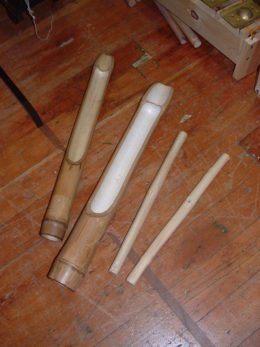
When you have your music lesson, do you ever wonder how the instrument you are holding in your hands was originally created? In other words, what was the evolutionary path of your guitar, piano, or any other instrument?
Yes, we know, this is not a question most people ask themselves. Yet, it’s a very interesting subject because instruments, just like other objects, have an often-fascinating history.
Well then, let’s explore the origin and development of some of the musical instruments that are part of our lives.
Our interest in this topic was sparked by a recent report that cites a study conducted by researchers at the Massachusetts Institute of Technology and others. Their findings, based on years of comparing various measurements, X-rays, and CAT scans of hundreds of violin-like instruments dating back to the 10th century, indicated that the instruments underwent changes comparable to the Darwinian process of evolution by natural selection.
This led us to another study published in an Australian magazine called “Acoustics” (yes, we are clearly a very well-read bunch!). In it, a scientist at the Australian National University argued that the development of instruments depended on the materials available at the specific time in history. That was perhaps one of the earliest examples of recycling: people used whatever scraps they found and fashioned instruments out of them.
For instance, based on some archeological finds, thousands of years ago people drilled holes in bones and made flutes. And when termites hollowed the centers of eucalyptus branches, all kinds of wind instruments were created.
Historical records, however, don’t provide us with all the information because most instruments were made from perishable materials like animal skin. But as time went by, more and more instruments were created out of studier, stronger, and less degradable materials, such as pewter, brass, and bronze alloy, from which instruments like cymbals – and later other percussions – developed.
It is interesting to note that in those pre-historic times, nobody just sat down and decided to create a musical instrument. It was more a process of surprising – and often accidental – discovery. For example, blowing into a conch shell might have led to first wind instruments, while banging a sword against a metal object eventually led to the invention of percussions.
Let’s not forget the wood, from which our ancestors built most common string instruments – violins, violas, cellos, double basses, and guitars. Throughout the ages, wood was in abundance; the earliest instruments were made out of boxwood, holm oak, cedar, and many others.
By the way, there is an interesting fact about the violin that we’d like to share with you: the most famous maker of this instrument in history, Antonio Stradivari, used the wood that was slightly different from what is available today. It had something to do with the cooler climate in the 18th century Europe. That’s why the sound of the original Stradivarius is not easy to duplicate with modern violins. (However, many professional violinists say that modern violins are just as good –if not better – than the old ones).
Would you like to find out more about the forerunners of our present-day instruments? There are many resources out there and they are all very interesting.
Needless to say, when our teachers come to your Manhattan, Brooklyn or Riverdale home of office, they will not be carrying a conch shell or animal bone. And they have zero training in making music out of a hollowed tree branch.
However, when it comes to teaching the newer and more common instruments, our teachers are…highly evolved!
